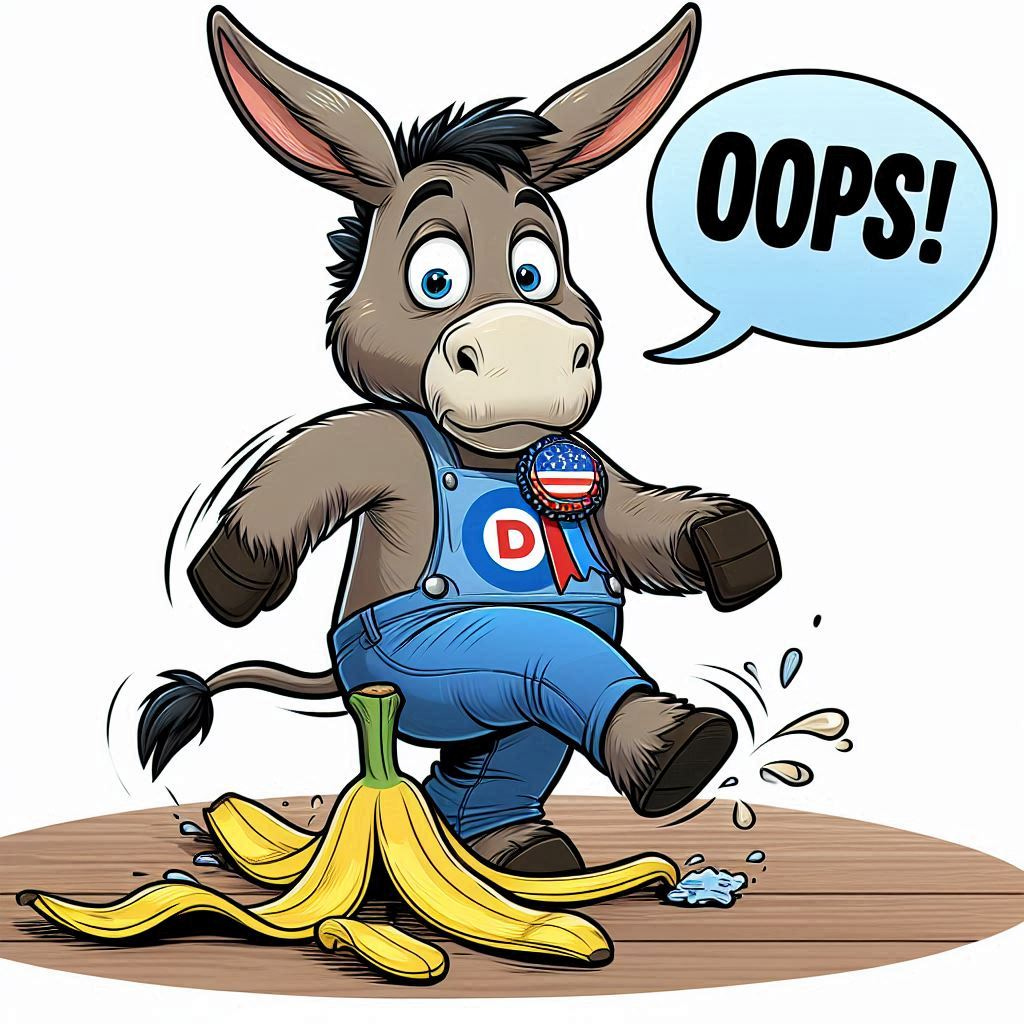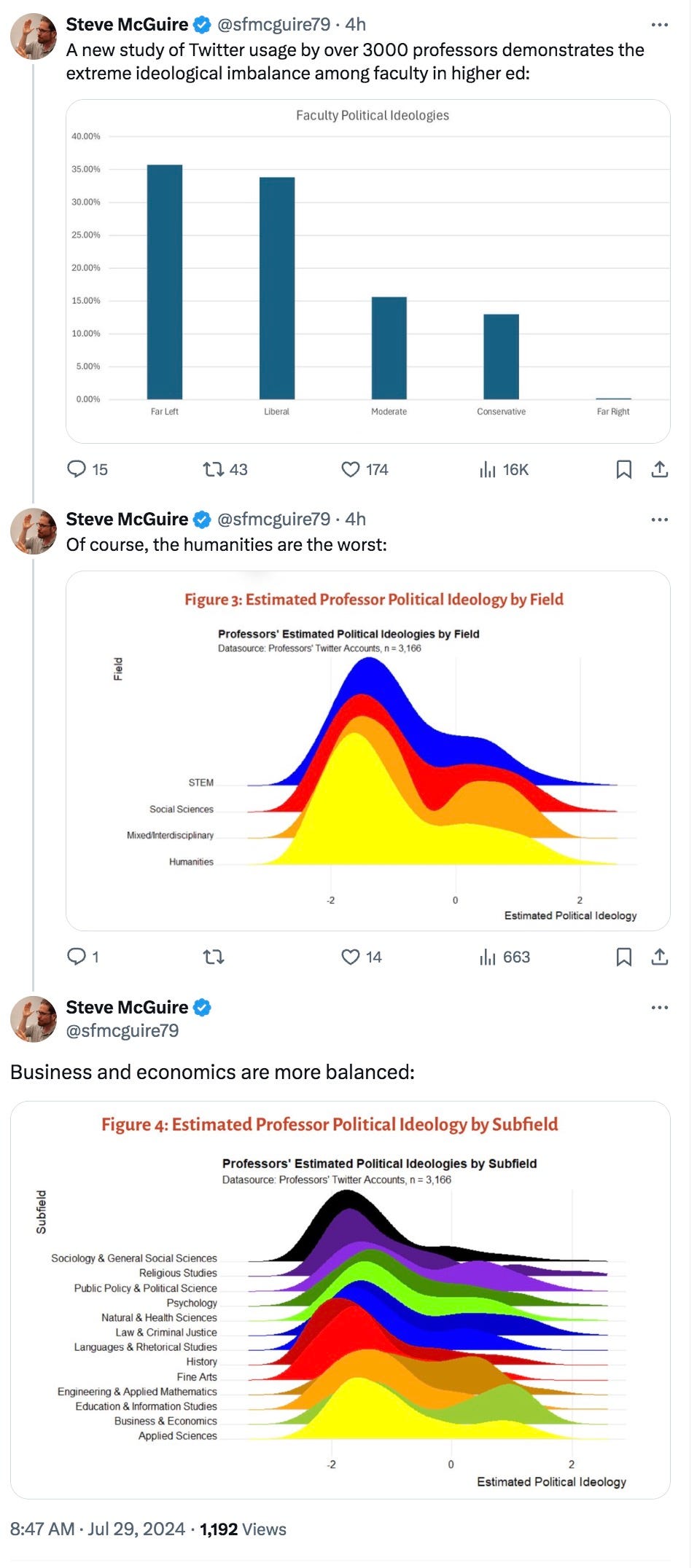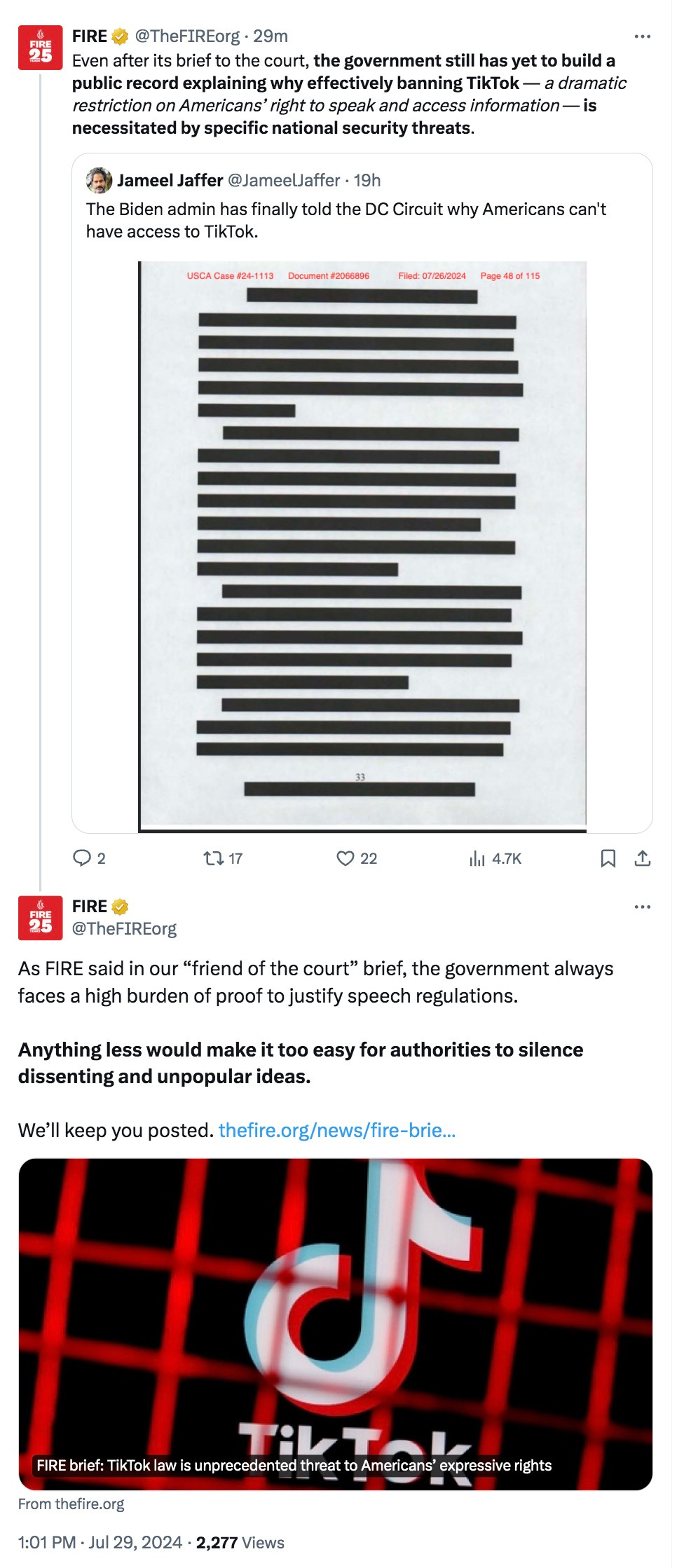E-Pluribus | July 29, 2024
Making Democrats Democratic Again; Making Liberals Liberal Again; and Making Democrats Republican.
A round-up of the latest and best musings on the rise of illiberalism in the public discourse:
Jon Gabriel: Democrats’ Democratic Problem
As the name implies, the Democratic party is one that styles itself as the voice of the people. At Discourse Magazine, Jon Gabriel suggests the party’s current behavior swapping out Joe Biden for Kamala Harris cuts the people out of the process altogether.
The late call to swap Biden with Harris hasn’t a hint of democracy, but was instead decided by elites in vape-filled rooms. For her own part, Harris hasn’t been embraced by average Americans. In fact, presidential candidate Harris in 2020 proved so unpopular she was forced to drop out before a single vote was cast. Her current approval rating remains underwater by double digits, so any argument that Harris was chosen for her appeal to the general public will fall flat.
Despite their name, the Democratic Party regularly subverts the democratic process with their win-at-all-costs tactics. In the 2022 midterms, it poured money into state and local races to promote the furthest-right candidates in Republican primaries—in the hopes that propping up far-right candidates in their primaries would make for more winnable general elections for Democrats. The Washington Post reported an investment of nearly $19 million across 12 races, which doesn’t include the $9.5 million from Illinois Gov. J.B. Pritzker (who’s on Harris’ shortlist for VP) or the $25 million from the Democratic Governors Association spent on the state’s Republican gubernatorial primary. (Partly thanks to this infusion of cash into the race, far-right Illinois State Senator Darren Bailey won the Republican primary—and was then soundly defeated by Pritzker in the general election.)
This helped stanch the midterm bleeding, but even Democrats admitted the blatant hypocrisy. Former Indiana Rep. Tim Roemer claimed the project “risks elevating these liars and giving them a platform for another three or four months—even if they end up getting beat—to drumbeat their message into the electorate and further erode trust.”
“It undermines our arguments about the very real democracy threat,” Democratic strategist Tré Easton said, “when we spend Democratic dollars bolstering people hostile to democracy.”
Read the whole thing.
Peter Berkowitz: In Search of Liberals of a More Liberal Persuasion
The temptation to set aside one’s principles for the greater, long-term good is strong - when one is confident that one’s ends are best, the means seem less significant. Writing for Real Clear Politics, Peter Berkowitz reviews a new book, Liberalism as a Way of Life, which urges those who consider themselves liberal to practice what they preach.
[Alexandre] Lefebvre’s book [“Liberalism as a Way of Life”] manifests many virtues. The author writes amiably and gracefully. His erudite and accessible arguments distill the main points of complex theories and bring them into focus with arresting examples and vivid analogies. His humor disarms and his self-deprecation charms. He underscores the threat posed to liberty by the individualism, materialism, and conformity fostered by democracy. He explains that for a liberal the common good consists in protecting shared rights. And he captures in multiple formulations and from numerous angles liberalism’s core commitment to that free and generous spirit that discerns the common humanity and unique individual in every person.
But Lefebvre cannot escape his academic discipline’s gravitational force. He identifies John Rawls (1921-2002), the most influential academic political theorist of the last half century, as his book’s hero. In the spirit of Rawls’ two major works, “A Theory of Justice” (1971) and “Political Liberalism” (1993), Lefebvre identifies the progressive interpretation of liberal democracy as the genuinely reasonable political perspective. And in the spirit of his many academic colleagues who specialize in political theory and seek to build on Rawls’ achievements, Lefebvre goes beyond the master. A true liberal manifests liberal values and virtues through and through, argues Lefebvre – with all one’s heart, with all one’s soul, and with all one’s might. Indulging such excesses, however, turns liberalism into an illiberal scheme that disparages dissenters from liberal orthodoxy and institutes moral hierarchies in the name of egalitarian social and political arrangements.
Lefebvre begins with an astute observation: Liberalism serves as the moral and intellectual horizon within which most citizens in English-speaking liberal democracies operate. It “saturates the public and background culture” of our political societies. Like the air we breathe, it is ubiquitous and taken for granted. Lefebvre does not insist that liberalism is the authoritative religion in our secular public world, but he does maintain that liberalism’s grounding in individual freedom and human equality supplies overarching values and norms, shapes widespread habits and behaviors, and underlies basic beliefs, attachments, and aspirations. It stands “at the root of all things us.”
[. . .]
Notwithstanding the almost otherworldly moral and spiritual integration that he attributes to them, Lefebvre’s all-the-way-down liberals will find it difficult from their commanding moral heights to relate to lesser individuals. Particularly vexing to them will be those who believe that division inheres in the human soul and that the imperfections of human nature and inevitable partiality and incompleteness of human experience entail unending conflict about rival conceptions of justice.
Despite his confidence in the superiority of his morality and politics, and much to his credit, Lefebvre visits weekly the right-wing website Breitbart. There he finds criticism of immigration policy and political correctness that he thinks wrong but within the boundaries of public reason’s requirements. He surpasses many of his fellow academic liberals by recognizing that prominent conservative arguments qualify for a hearing in the public sphere, but he gives little indication of learning anything important from them.
That is a far cry from John Stuart Mill’s classical liberalism. In his masterpiece, “On Liberty,” Mill argued that in view of human limitations, “a party of order or stability, and a party of progress or reform, are both necessary elements of a healthy state of political life.” And not as a formality, but because both conservatives and progressives champion truths that the other typically overlooks, belittles, or suppresses.
Read it all here.
George Hawley: Red Shift
In the first item above, Jon Gabriel argues that the Democratic party is losing some of its democratic fervor. At City Journal, George Hawley writes that it’s also losing some of its Democrats. A new book by Stephanie Ternullo examines how some solidly blue states have slowly but surely morphed into red ones.
A recent book by political scientist Stephanie Ternullo [. . .] argues that this new conventional wisdom—that all rural and small-town politics is national—may be wrong. How the Heartland Went Red: Why Local Forces Matter in an Age of Nationalized Politics makes a powerful argument that economic, cultural, and political developments at the local level still matter a great deal. It just happens to be the case, she argues, that trends in small communities have typically favored the GOP.
The communities Ternullo focuses on were once a pillar of the old New Deal coalition: relatively small but also industrialized, overwhelmingly white, and with muscular labor unions. Over recent decades, most communities that had these characteristics have shifted rightward, sometimes in dramatic fashion. The geographic scope of this shift, now transcending state and regional boundaries, seemed to confirm the theory that this was the result of the nationalization of American politics.
[. . .]
According to Ternullo, every city has characteristics that lead it to embrace certain cultural frameworks, which in turn carry important partisan implications: “(1) diagnostic frames that they use to define their social problems and identify political solutions; and (2) narratives of community identity that describe what kind of community they are and where they fit into party politics.” The rise of MAGA politics in the American heartland can be ascribed to a growing number of communities like Gravesend.
Ternullo’s book is a welcome addition to the political science literature, which has recently given less attention to the politics of place, instead emphasizing other kinds of personal identities (racial, religious, sexual, and so forth). She does not argue that place is the most important determinant of political identity, only that it still matters, and political scientists must take it seriously. Though the author is a progressive, her book is impressively dispassionate and evenhanded, the only exception being her tendency to shoehorn discussions of race into passages where they do not seem especially relevant.
For political practitioners, the book offers several lessons. Most readers will agree that, of the two communities in her study now firmly Republican, Lutherton is by far the healthier and more resilient one. Conservatives genuinely concerned about the wellbeing of postindustrial communities should carefully study places like Lutherton. Unfortunately, creating the kinds of cultural conditions that persist in such communities is not easy. Building up the religious life of a community and forming effective religious charitable organizations are not jobs for government—nor should they be.
[. . .]
Social conservatives can be genuinely ambivalent about labor’s decline. As sociologist Robert Nisbett noted, unions were among the intermediary institutions standing between the individual and the state. As such, they were an important part of American civic life and a bulwark against social atomization. Empirical evidence also suggests that union membership is positively associated with family formation.
Whatever one thinks about organized labor in America, the partisan implications of smaller, weaker unions are unambiguous. Democrats are the main political beneficiaries of our nation’s ongoing demographic changes; falling union membership rates are one of the few developments benefitting the GOP. A revitalized labor movement would almost certainly make the party’s long-term viability even more tenuous.
Read it all.
Around Twitter (X)
From Steve McGuire: if you are looking for the ideological bent of college professors, follow the tweets:
If you are looking for an explanation of how the Biden administration would justify banning TikTok, a recent court brief won’t exactly clear things up:
And finally, a helpful DIY diagram via Ayaan Hirsi Ali:









